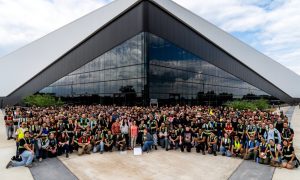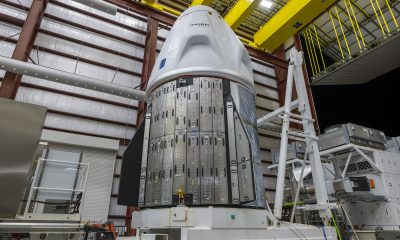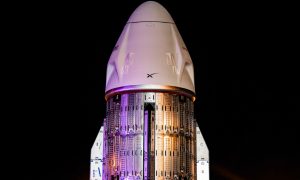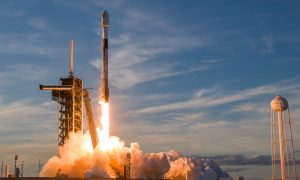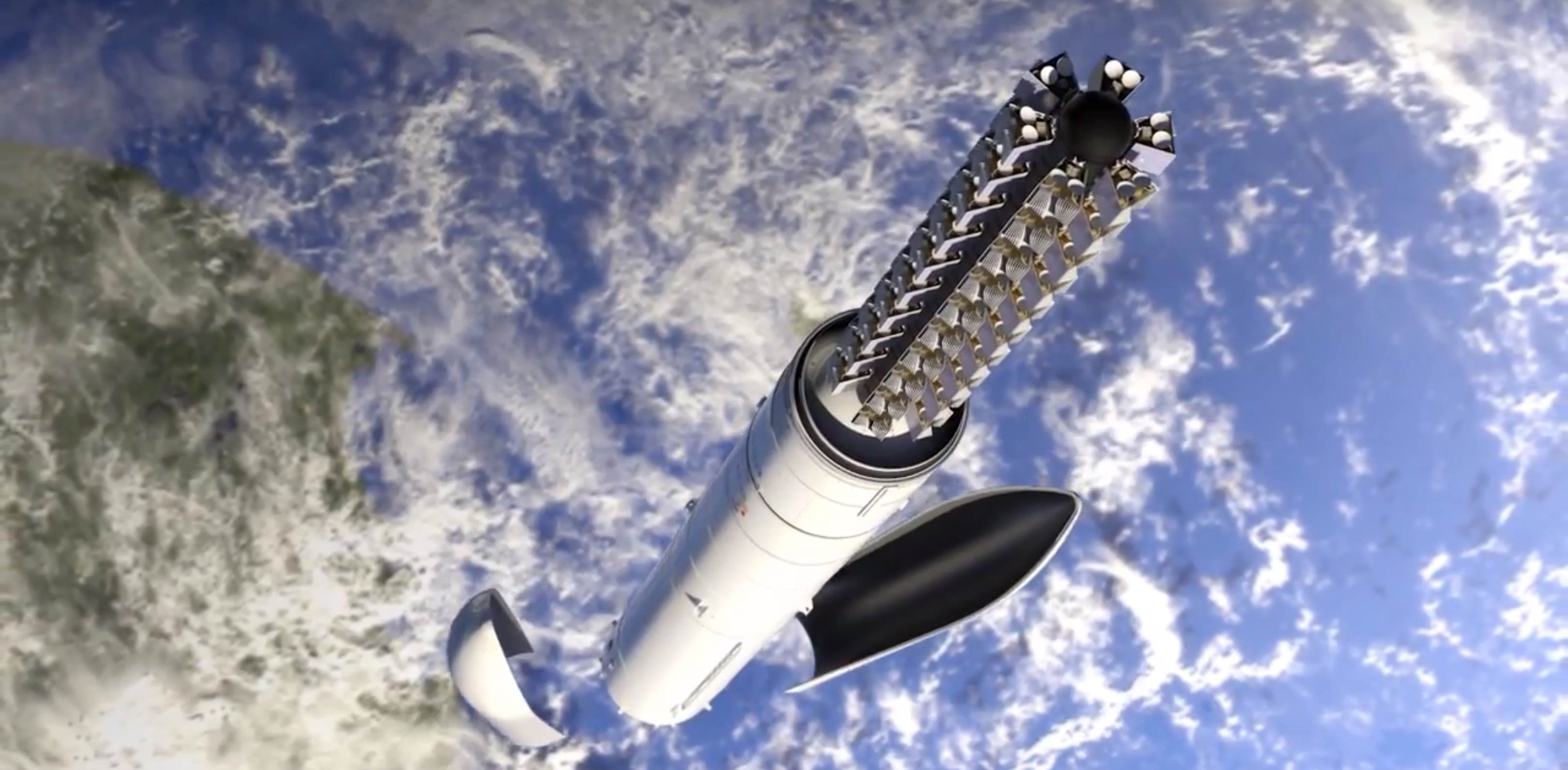

News
SpaceX’s Starlink launch debut to orbit dozens of satellites later this month
SpaceX President and COO Gwynne Shotwell has revealed that the company’s first dedicated Starlink launch is scheduled for May 15th and will involve “dozens” of satellites.
Corroborated by several sources, the actual number of Starlink satellites that will be aboard Falcon 9 is hard to believe given that it is a satellite constellation’s first quasi-operational launch. Suffice it to say, if all spacecraft reach orbit in good health, SpaceX will easily become the operator and owner of one of the top five largest commercial satellite constellations in the world with a single launch. Such an unprecedentedly ambitious first step suggests that the perceived practicality of SpaceX’s Starlink ambitions may need to be entirely reframed going forward.
From 0 to 100
In short, it’s hard to exaggerate just how much of a surprise it is to hear that SpaceX’s very first Starlink launch – aside from two prototypes launched in Feb. 2018 – will attempt to place “dozens” of satellites in orbit. Competitor OneWeb, for example, conducted its first launch in February 2019, placing just six satellites in orbit relative to planned future launches with 20-30. To go from 2(ish) to “dozens” in a single step will break all sorts of industry standards/traditions.
Despite the ~15 months that have passed since that first launch, SpaceX’s Starlink team has really only spent the last 6-9 months in a phase of serious mass-production buildup. As of now, the company has no dedicated satellite factory – space in Hawthorne, CA is far too constrained. Instead, the design, production, and assembly of Starlink satellites is being done in 3-4 separate buildings located throughout the Seattle/Redmond area.

SpaceX’s Starlink team has managed to transition almost silently from research and development to serious mass-production (i.e. dozens of satellites) in the space of about half a year. The dozens of spacecraft scheduled to launch on SpaceX’s first dedicated mission – likely weighing 200-300 kg (440-660 lb) each – have also managed to travel from Seattle to Cape Canaveral in the last few months and may now be just a few days away from fairing encapsulation.
To some extent, the first flight-ready batch of “dozens” of satellites are still partial prototypes, likely equivalent to the second round of flight testing mentioned by CEO Elon Musk last year. This group of spacecraft will have no inter-satellite laser (optical) links, a feature that would transform an orbiting Starlink constellation into a vast mesh network. According to FCC filings, the first 75 satellites will be of the partial-prototype variety, followed soon after by the first spacecraft with a more or less finalized design and a full complement of hardware.
If this is just step one…
Meanwhile, Shotwell – speaking at the Satellite 2019 conference – suggested that SpaceX could launch anywhere from two to six dedicated Starlink missions this year, depending on the performance of the first batch. Put a slightly different way, take the “dozens” of satellites she hinted at, multiply that number by 6, and you’ve arrived at the number of spacecraft she believes SpaceX is theoretically capable of producing and delivering in the next 7.5 months.
“Dozens” implies no less than two dozen or a bare minimum of 144 satellites potentially built and launched before the year is out. However, combined with a target orbit of 450 km (280 mi) and a planned drone ship booster recovery more than 620 km (385 mi) downrange, 36, 48, or 60 satellites seem far more likely. Tintin A/B – extremely rough, testbed-like prototypes – were about 400 kg (~900 lb) each.
As an example, SpaceX’s eight Iridium NEXT satellite launches had payloads of more than 10,000 kg (22,000 lb), were launched to an orbit around 630 km (390 mi), and required a upper stage coast and second burn on-orbit. Further, Iridium missions didn’t get the efficiency benefit that Starlink will by launching east along the Earth’s rotational axis. Despite all that, Falcon 9 Block 5 boosters were still able to land less than 250 km (155 mi) downrange after Iridium launches. Crew Dragon’s recent launch debut saw Falcon 9 place the >13,000 kg (28,700 lb) payload into a 200 km (125 mi) orbit with a drone ship landing less than 500 km (310 mi) downrange, much of which was margin to satisfy safety requirements.
Starlink-1’s target orbit is thus a third lower than Iridium NEXT, while its drone ship will be stationed more than 2.5 times further downrange. Combined, SpaceX’s first Starlink payload will likely weigh significantly more than ~13,000 kg and may end up being the heaviest payload the company has yet to launch.

Assuming a payload mass of ~14,000 kg (~31,000 lb) at launch, a worst-case scenario with ~400 kg spacecraft and a 2000 kg dispenser would translate to 30 Starlink satellites. Cut their mass to 300 kg and the dispenser to 1000 kg and that rises to ~45 satellites. Drop even further to 200 kg apiece and a single recoverable Falcon 9 launch could place >60 satellites in orbit.
Of course, this entirely ignores the elephant in the room: the usable volume of SpaceX’s standard Falcon payload fairing. It’s unclear how SpaceX would fit 24 – let alone 60 – high-performance satellites into said fairing without severely constraining their design and capabilities. SpaceX’s solution to this problem will effectively remain unanswered until launch, assuming the company is willing to provide some sort of press release and/or offer a live view of spacecraft deployment on their webcast. Given the cutthroat nature of competition with the likes of OneWeb, Telesat, LeoSat, and others, this is not guaranteed.

At the end of the day, such a major leap into action bodes extremely well for SpaceX’s ability to realize its ambitious Starlink constellation, and do so fast. For those on Earth without reliable internet access or any access at all, the faster Starlink – and competing constellations, for that matter – can be realized, the sooner all of humanity can enjoy the many benefits connectivity can bring. For those that sit under the thumb of monopolistic conglomerates like Comcast and Time Warner Cable, relief will be no less welcome.
Stay tuned as we get closer to Starlink-1’s May 15th launch date. Up next is a static fire of the mission’s Falcon 9 rocket, perhaps just two or three days from now.
Check out Teslarati’s Marketplace! We offer Tesla accessories, including for the Tesla Cybertruck and Tesla Model 3.
News
Tesla Robotaxi just got a big benefit from the U.S. government
The NHTSA is looking to help streamline the application process for companies developing driverless vehicles.
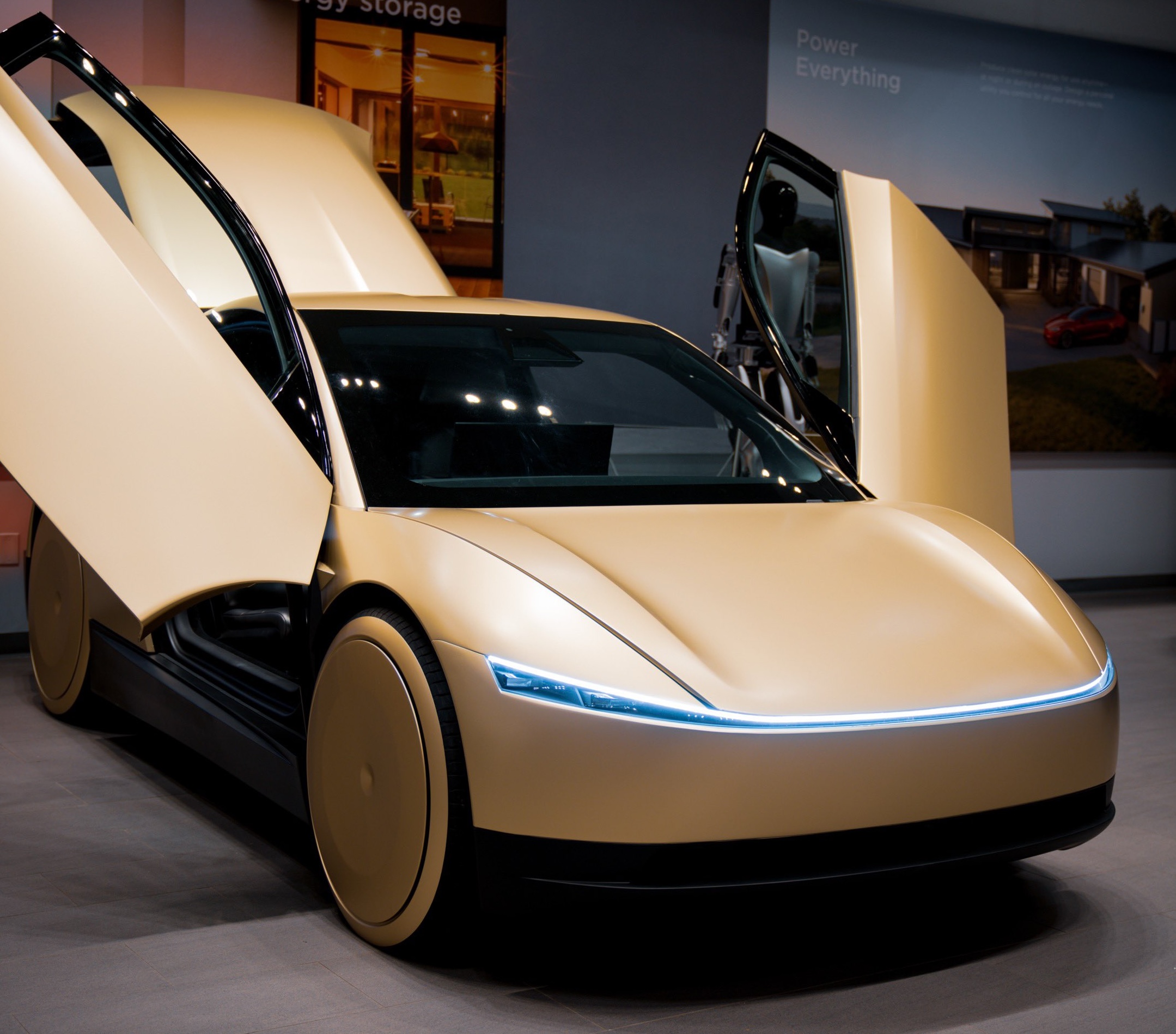
Tesla Robotaxi just got a big benefit from the U.S. Government, as the National Highway Traffic Safety Administration (NHTSA) is looking to ease some rules and streamline the application process that could hinder the development and licensing of autonomous vehicles.
Tesla is set to launch its Robotaxi platform in the coming days or weeks, but regulation on autonomous vehicles is incredibly slim, so automakers are left in a strange limbo as permissions to operate are usually up to local jurisdictions.
The NHTSA still has the ultimate say, but it is now adopting a new strategy that will see companies gain an exemption from federal safety standards and streamline the entire application process.
The agency is authorized to grant exemptions to permit manufacturers to produce vehicles over a two or three-year period that might not comply with certain Federal Motor Vehicle Safety Standards (FMVSS). Robotaxi, for example, will eventually not have a steering wheel or pedals, through the Cybercab that Tesla unveiled last October.
The exemption program the NHTSA announced today would be possible through Part 555 of the National Traffic and Motor Vehicle Safety Act:
“NHTSA may grant a Part 555 exemption if at least one of four bases listed in the statute is met and NHTSA determines that the exemption is consistent with the public interest and the Safety Act. The statute also authorizes NHTSA to subject an exemption to terms the agency deems appropriate and requires that NHTSA publish notice of the application and provide an opportunity to comment.”
The rapid and non-stop innovation that is being performed is tough to keep up with from a legal standpoint. The NHTSA recognizes this and says current legislation is appropriate for traditional vehicles, but not for the self-driving cars companies are producing now:
“The current Part 555 process was designed for traditional vehicles. As currently applied, this process is not well suited for processing exemptions involving ADS-equipped vehicles in a timely manner or overseeing the unique complexities involving their operations. This has resulted in long processing times for applications for ADS-equipped vehicles. NHTSA must improve its Part 555 processing times substantially to keep pace with the rapid innovation of the ADS industry and to ensure that exemptions remain effective tools for nurturing groundbreaking safety technologies.”
Now, the NHTSA will be “enhancing application instructions” to help manufacturers understand the requirements involved in the application process. This will streamline the entire process by “reducing the need for NHTSA to request additional information from the manufacturer,” the agency says.
First Tesla driverless robotaxi spotted in the wild in Austin, TX
Next, the NHTSA is going to have a more flexible approach to evaluating exemptions for ADS-equipped vehicles:
“To build flexibility into the Part 555 process while also accounting for the unique aspects of those exemptions, NHTSA intends to develop terms that could be included in Part 555 exemption grants, when appropriate, to condition operations of exempted ADS-equipped vehicles on enhanced and continuing oversight from NHTSA. NHTSA would expect to administer this enhanced oversight through letters, which could be updated over time, mirroring real-world ADS development. This will enable NHTSA to focus its initial review during the application stage and align the Part 555 oversight approach more closely to exemptions administered under NHTSA’s Automated Vehicle Exemption Program (AVEP), which have proven effective for ADS.”
This will benefit any company making autonomous vehicles, but it will especially benefit Tesla in the short-term as it is readying for the launch of Robotaxi.
Tesla is trading up 1.89 percent at the time of publication.
Part 555 Letter June 2025 by Joey Klender on Scribd
News
SpaceX produces its 10 millionth Starlink kit
The first 5 million Starlink kits took nearly four years to build.
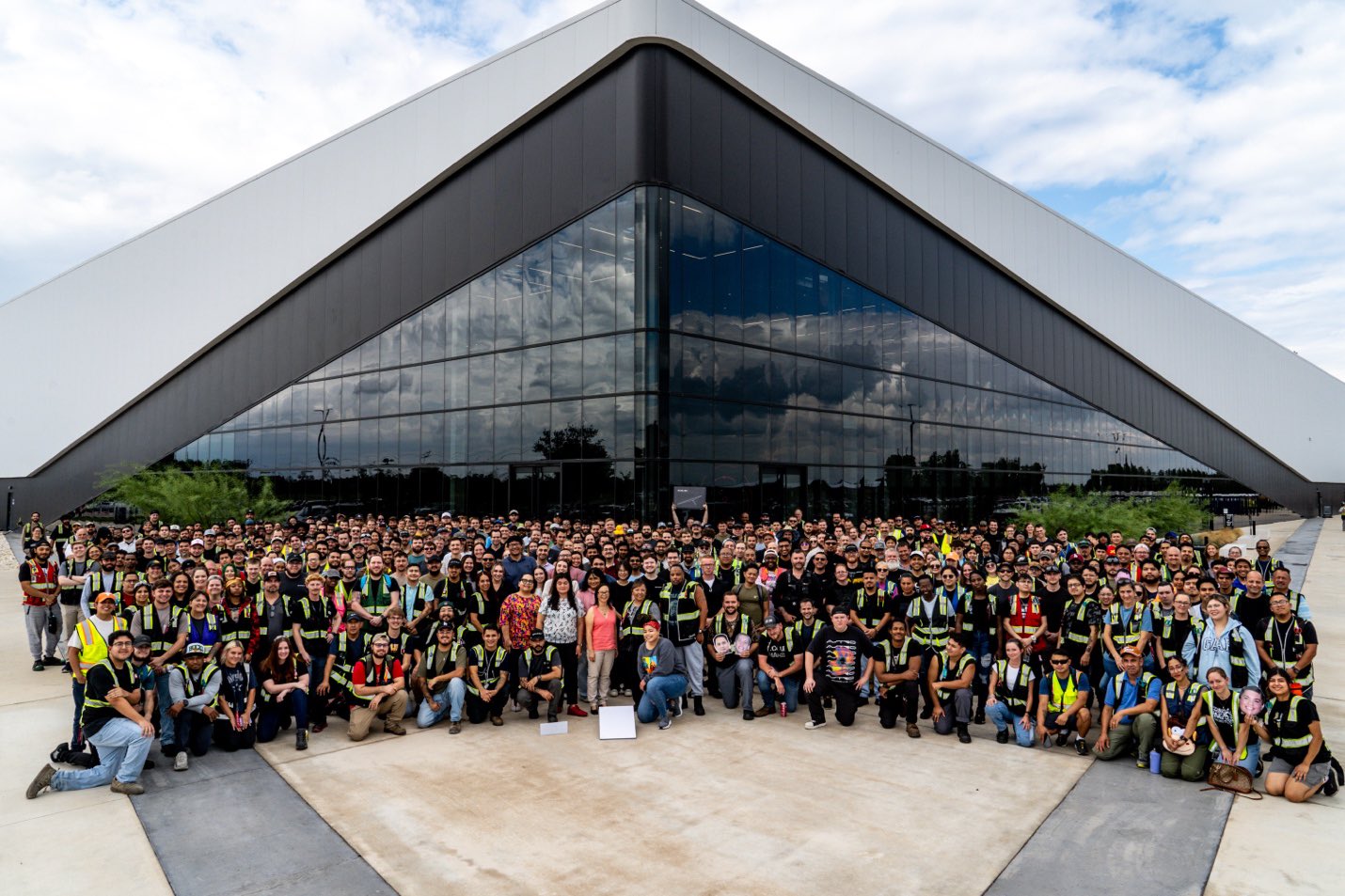
SpaceX has achieved a major milestone, producing its 10 millionth Starlink kit. The accomplishment was celebrated across the company’s Hawthorne, California, and Bastrop, Texas, facilities.
The milestone was shared in social media by Sujay Soman, Senior Facilities Engineer, in a LinkedIn post, which has since been deleted.
Starlink Production Ramp
Soman noted in his LinkedIn post that the first 5 million Starlink kits took nearly four years to build, but the next 5 million kits were completed in just 11 months. This underscores SpaceX’s intense efforts to ramp up the satellite internet system’s production, and it reflects the private space company’s manufacturing prowess.
The SpaceX Senior Facilities Engineer shared a couple of photos of the Machine Maintenance and Facilities team in Bastrop to commemorate the event.
“Today, Starlink Product teams across our Hawthorne and Bastrop sites produced the 10th Million Starlink Kit! It took almost 4 years to build our first 5 million kits, and we doubled that in about 11 months. Monumental accomplishment!” Soman wrote in his post.
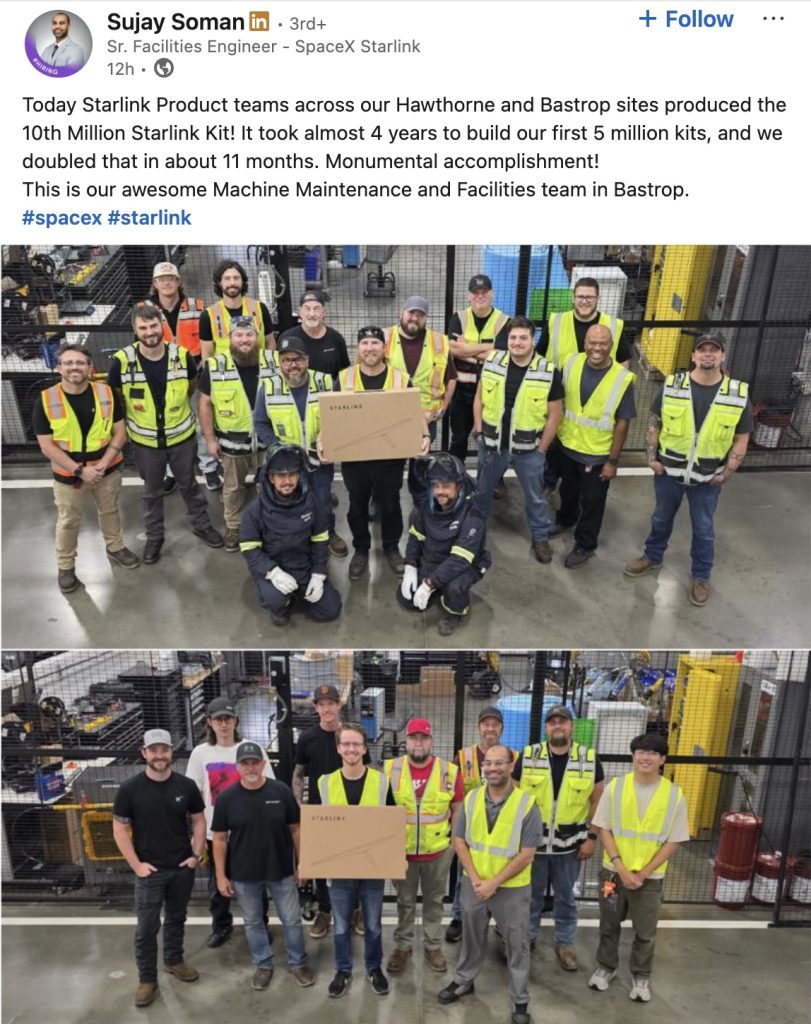
World-Changing Technology
The Starlink kits, featuring dish hardware and supporting equipment, enable users to connect to the company’s growing constellation of low Earth orbit satellites. With over 6,000 satellites launched to date, Starlink now provides fast and reliable internet connectivity to over 6 million customers worldwide. This was a significant increase from the 5 million customers that the company reported in February 2025.
SpaceX has not detailed its next production targets, but the production of Starlink’s 10 millionth kit milestone signals the company’s readiness to scale further. Being an Elon Musk-led company, SpaceX is arguably the best in the business when it comes to efficient and cost-effective manufacturing. It would then be unsurprising if SpaceX announces another Starlink production milestone soon.
News
Tesla retires yoke steering wheel in base Model S and X
Tesla’s controversial steering yoke is now exclusive to the Model S and Model X Plaid.
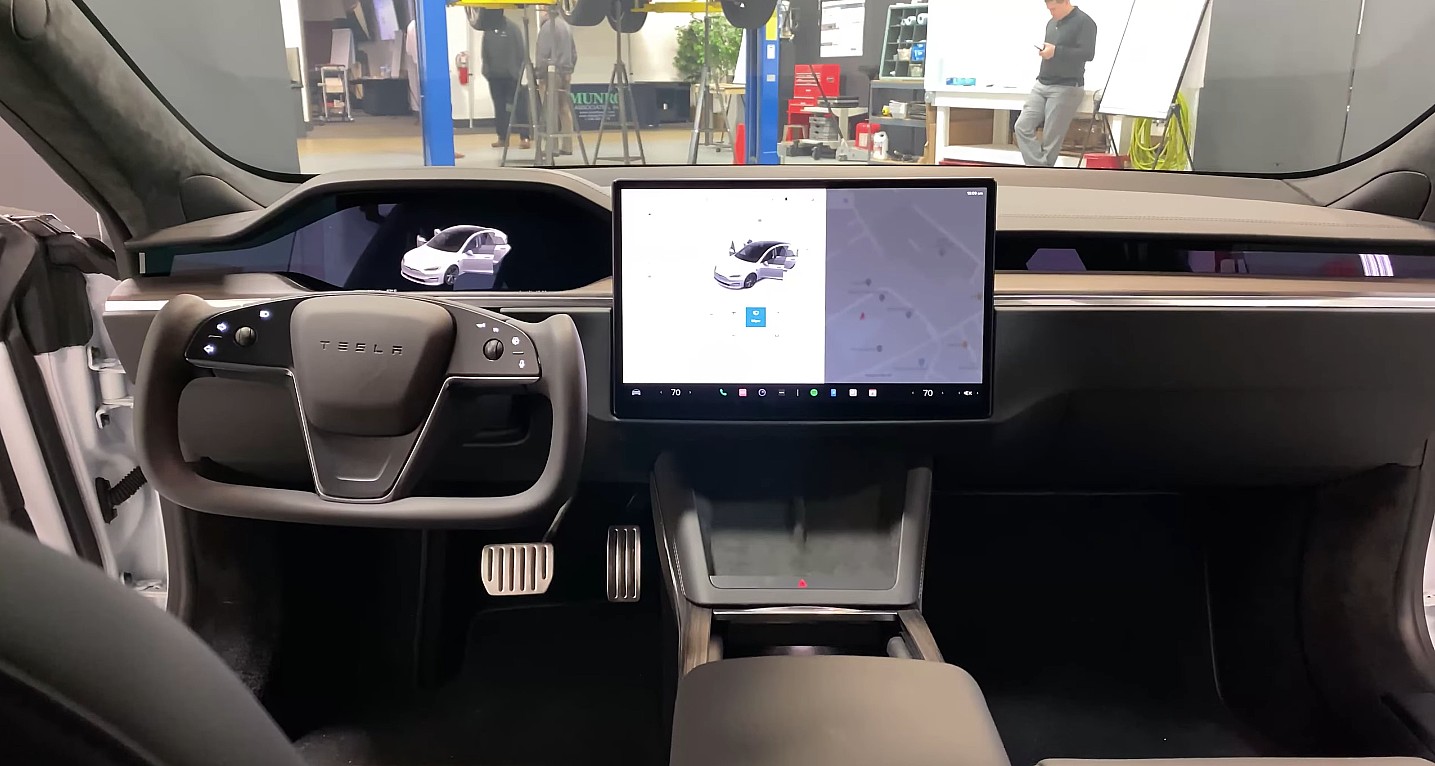
Tesla has closed a chapter in the saga of the Model S and Model X’s controversial steering yoke. Following the announcement of the new iterations of the flagship vehicles, Tesla promptly removed the steering option for the vehicles’ base variants.
This means that if drivers wish to experience the Model S or Model X with a yoke, they would have to go Plaid.
The new Model S and Model X
The refresh of the Model S and Model X were quite minor, with the two vehicles featuring a new front camera, a new color, and a handful of other small changes like new exterior styling for the Model S Plaid. Tesla also noted on its website that the two vehicles now have a much smoother and quieter ride.
The changes were quite polarizing, with some appreciating the subtle improvements made to the two flagship cars and others arguing that Tesla should have done more. Others, however, noted that the level of improvements implemented on the Model S and Model X would already be considered major refresh for a tech company like Apple.
No More Yoke Unless Plaid
When Tesla refreshed the Model S and Model X in 2021, the vehicles were released with a steering yoke as standard. The yoke was controversial, with critics stating that it was unsafe and fans stating that it made driving the Model S and Model X fun. Tesla later introduced a round steering wheel option for the Model S and Model X, which later became standard on the two flagship vehicles.
This remains true today, with the most recent versions of the Model S and Model X still being released with a round steering wheel as standard. Those who wish to experience the Model S and Model X Plaid as envisioned by the company and its CEO, Elon Musk, however, might find it a good idea to spend the extra $1,000 for the vehicles’ yoke steering wheel.
-
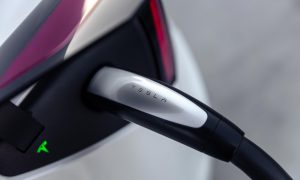
 News2 weeks ago
News2 weeks agoTesla to lose 64 Superchargers on New Jersey Turnpike in controversial decision
-

 News4 days ago
News4 days agoI took a Tesla Cybertruck weekend Demo Drive – Here’s what I learned
-
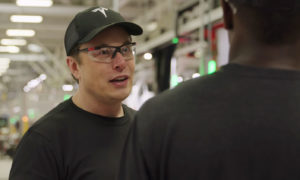
 Elon Musk1 week ago
Elon Musk1 week agoElon Musk explains Tesla’s domestic battery strategy
-
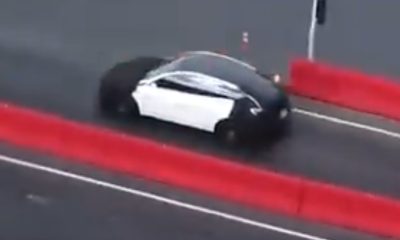
 News2 weeks ago
News2 weeks agoTesla’s apparent affordable model zips around Fremont test track
-
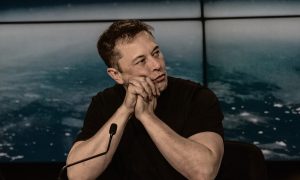
 Elon Musk2 weeks ago
Elon Musk2 weeks agoTesla stock: Morgan Stanley says eVTOL is calling Elon Musk for new chapter
-
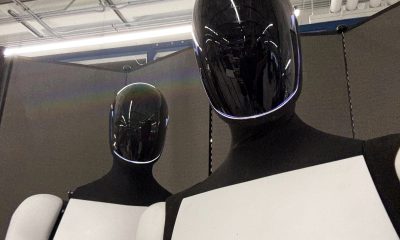
 Elon Musk5 days ago
Elon Musk5 days agoTesla tops Cathie Wood’s stock picks, predicts $2,600 surge
-
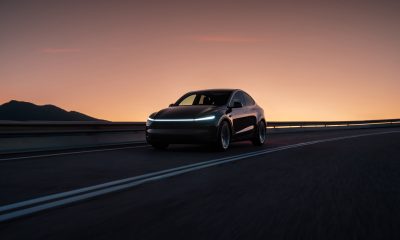
 Investor's Corner2 weeks ago
Investor's Corner2 weeks agoTesla bull writes cautious note on Robotaxi launch: ‘Keep expectations well contained’
-

 Elon Musk2 weeks ago
Elon Musk2 weeks agoElon Musk responds to Tesla Supercharger shutdown on NJ Turnpike


